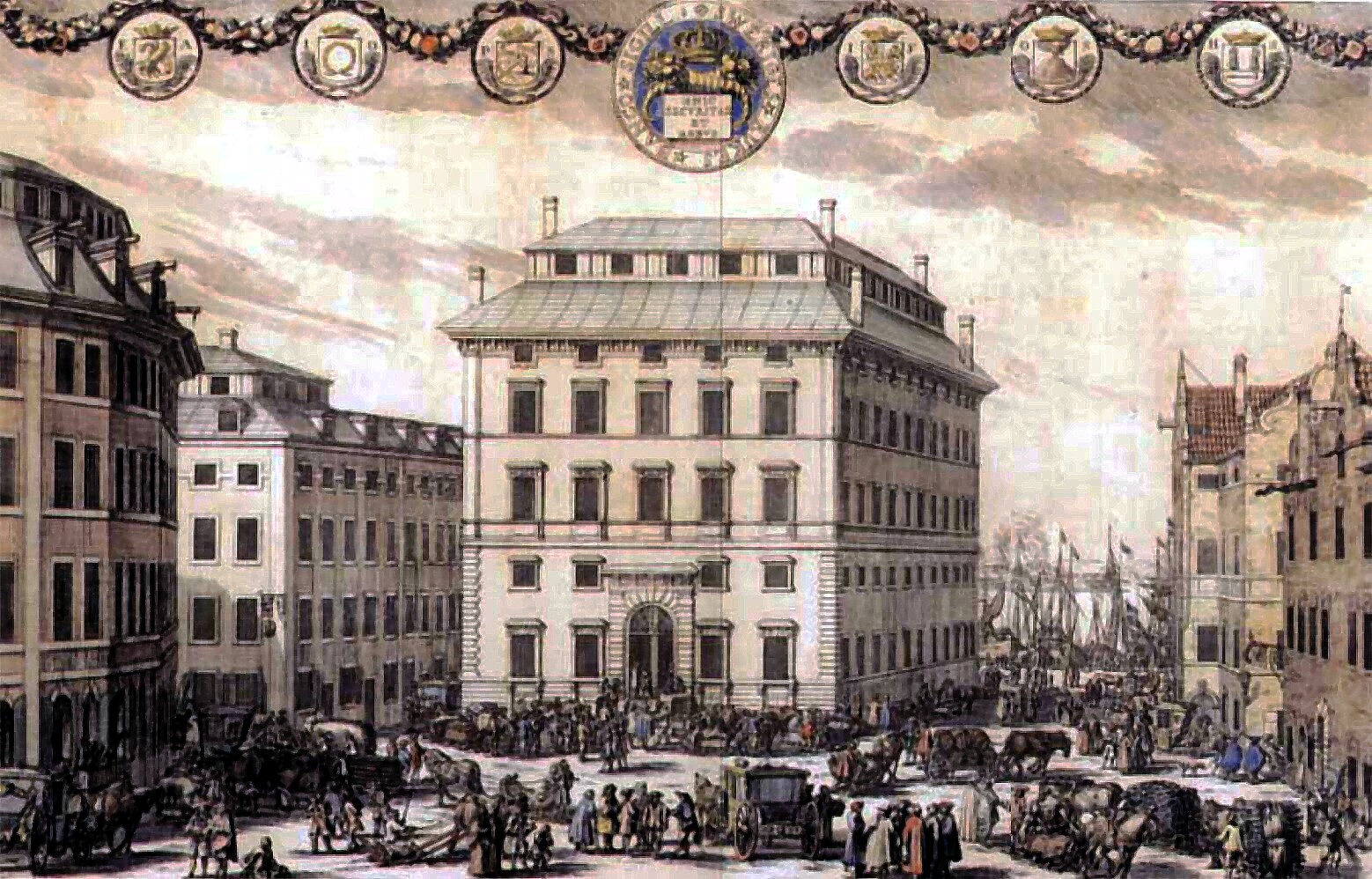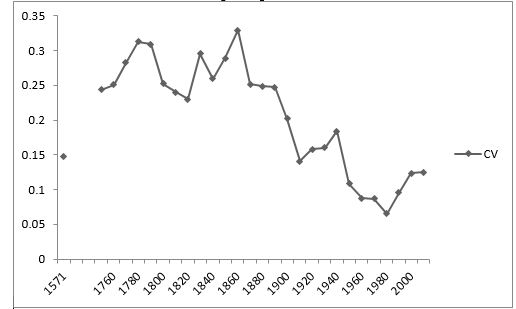All quiet before the take-off? Pre-industrial regional inequality in Sweden (1571-1850)
by Anna Missiaia and Kersten Enflo (Lund University)
This research is due to be published in the Economic History Review and is currently available on Early View.

For a long time, scholars have thought about regional inequality merely as a by-product of modern economic growth: following a Kuznets-style interpretation, the front-running regions increase their income levels and regional inequality during industrialization; and it is only when the other regions catch-up that overall regional inequality decreases and completes the inverted-U shaped pattern. But early empirical research on this theme was largely focused on the the 20th century, ignoring industrial take-off of many countries (Williamson, 1965). More recent empirical studies have pushed the temporal boundary back to the mid-19th century, finding that inequality in regional GDP was already high at the outset of modern industrialization (see for instance Rosés et al., 2010 on Spain and Felice, 2018 on Italy).
The main constraint for taking the estimations well into the pre-industrial period is the availability of suitable regional sources. The exceptional quality of Swedish sources allowed us for the first time to estimate a dataset of regional GDP for a European economy going back to the 16th century (Enflo and Missiaia, 2018). The estimates used here for 1571 are largely based on a one-off tax proportional to the yearly production: the Swedish Crown imposed this tax on all Swedish citizens in order to pay a ransom for the strategic Älvsborg castle that had just been conquered by Denmark. For the period 1750-1850, the estimates rely on standard population censuses. By connecting the new series to the existing ones from 1860 onwards by Enflo et al. (2014), we obtain the longest regional GDP series for any given country.
We find that inequality increased dramatically between 1571 and 1750 and remained high until the mid-19th century. Thereafter, it declined during the modern industrialization of the country (Figure 1). Our results discard the traditional view that regional divergence can only originate during an industrial take-off.
Figure 1. Coefficient of variation of GDP per capita across Swedish counties, 1571-2010.

Figure 2 shows the relative disparities in four benchmark years. If the country appeared relatively equal in 1571, between 1750 and 1850 both the mining districts in central and northern Sweden and the port cities of Stockholm and Gothenburg emerged.
Figure 2. The relative evolution of GDP per capita, 1571-1850 (Sweden=100).

The second part of the paper is devoted to the study of the drivers of pre-industrial regional inequality. Decomposing the Theil index for GDP per worker, we show that regional inequality was driven by structural change, meaning that regions diverged because they specialized in different sectors. A handful of regions specialized in either early manufacturing or in mining, both with a much higher productivity per worker compared to agriculture.
To explain this different trajectory, we use a theoretical framework introduced by Strulik and Weisdorf (2008) in the context of the British Industrial Revolution: in regions with a higher share of GDP in agriculture, technological advancements lead to productivity improvements but also to a proportional increase in population, impeding the growth in GDP per capita as in a classic Malthusian framework. Regions with a higher share of GDP in industry, on the other hand, experienced limited population growth due to the increasing relative price of children, leading to a higher level of GDP per capita. Regional inequality in this framework arises from a different role of the Malthusian mechanism in the two sectors.
Our work speaks to a growing literature on the origin of regional divergence and represents the first effort to perform this type of analysis before the 19th century.
To contact the authors:
References
Enflo, K. and Missiaia, A., ‘Regional GDP estimates for Sweden, 1571-1850’, Historical Methods, 51(2018), 115-137.
Enflo, K., Henning, M. and Schön, L., ‘Swedish regional GDP 1855-2000 Estimations and general trends in the Swedish regional system’, Research in Economic History, 30(2014), pp. 47-89.
Felice, E., ‘The roots of a dual equilibrium: GDP, productivity, and structural change in the Italian regions in the long run (1871-2011)’, European Review of Economic History, (2018), forthcoming.
Rosés, J., Martínez-Galarraga, J. and Tirado, D., ‘The upswing of regional income inequality in Spain (1860–1930)’, Explorations in Economic History, 47(2010), pp. 244-257.
Strulik, H., and J. Weisdorf. ‘Population, food, and knowledge: a simple unified growth theory.’ Journal of Economic Growth 13.3 (2008): 195.
Williamson, J., ‘Regional Inequality and the Process of National Development: A Description of the Patterns’, Economic Development and Cultural Change 13(1965), pp. 1-84.

